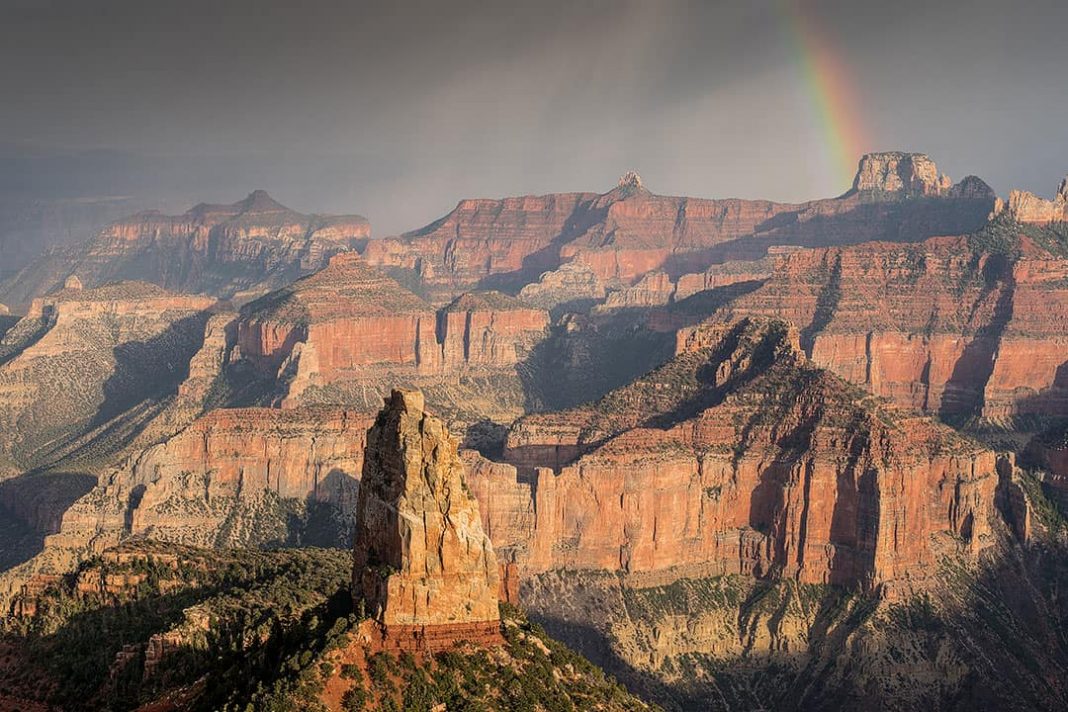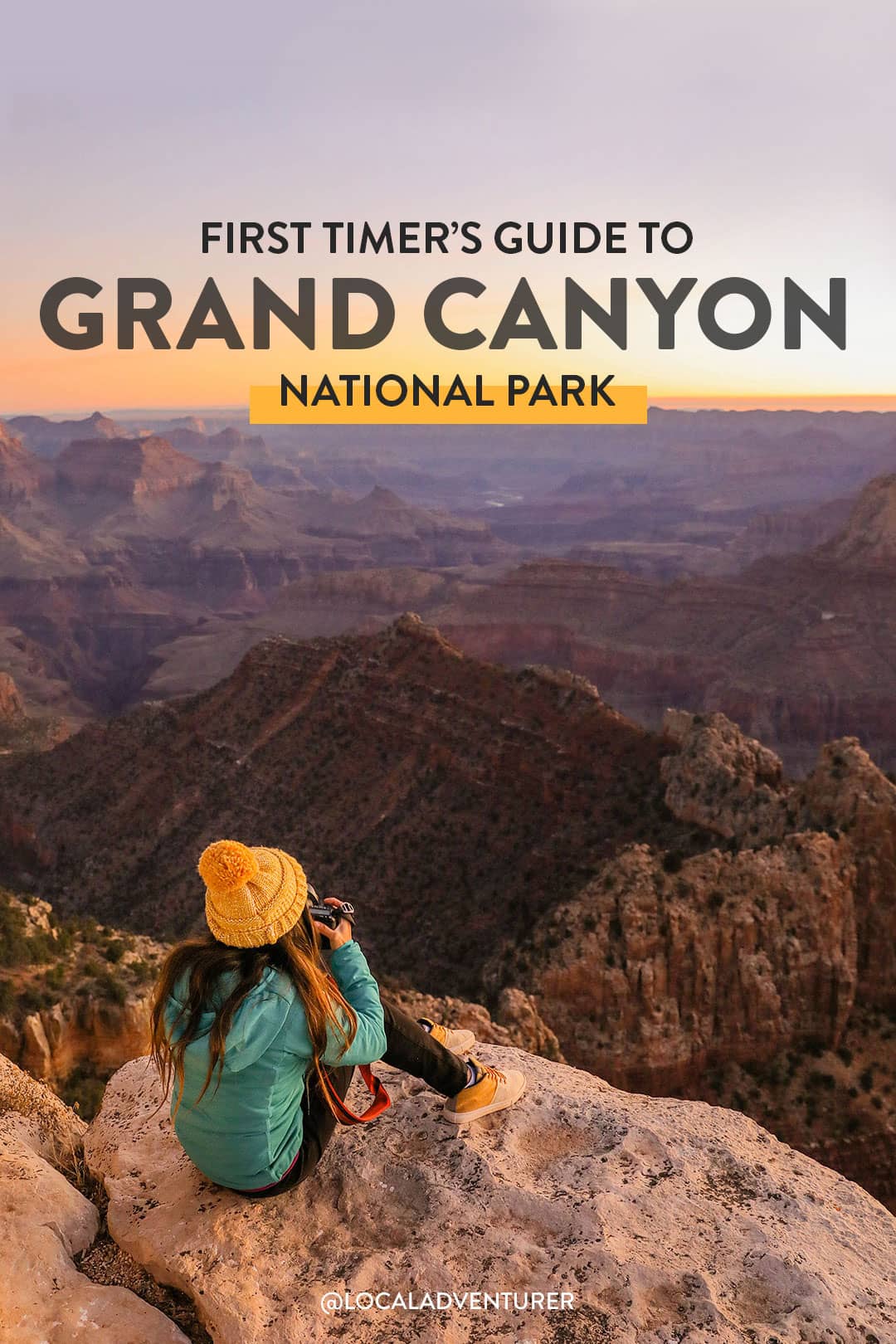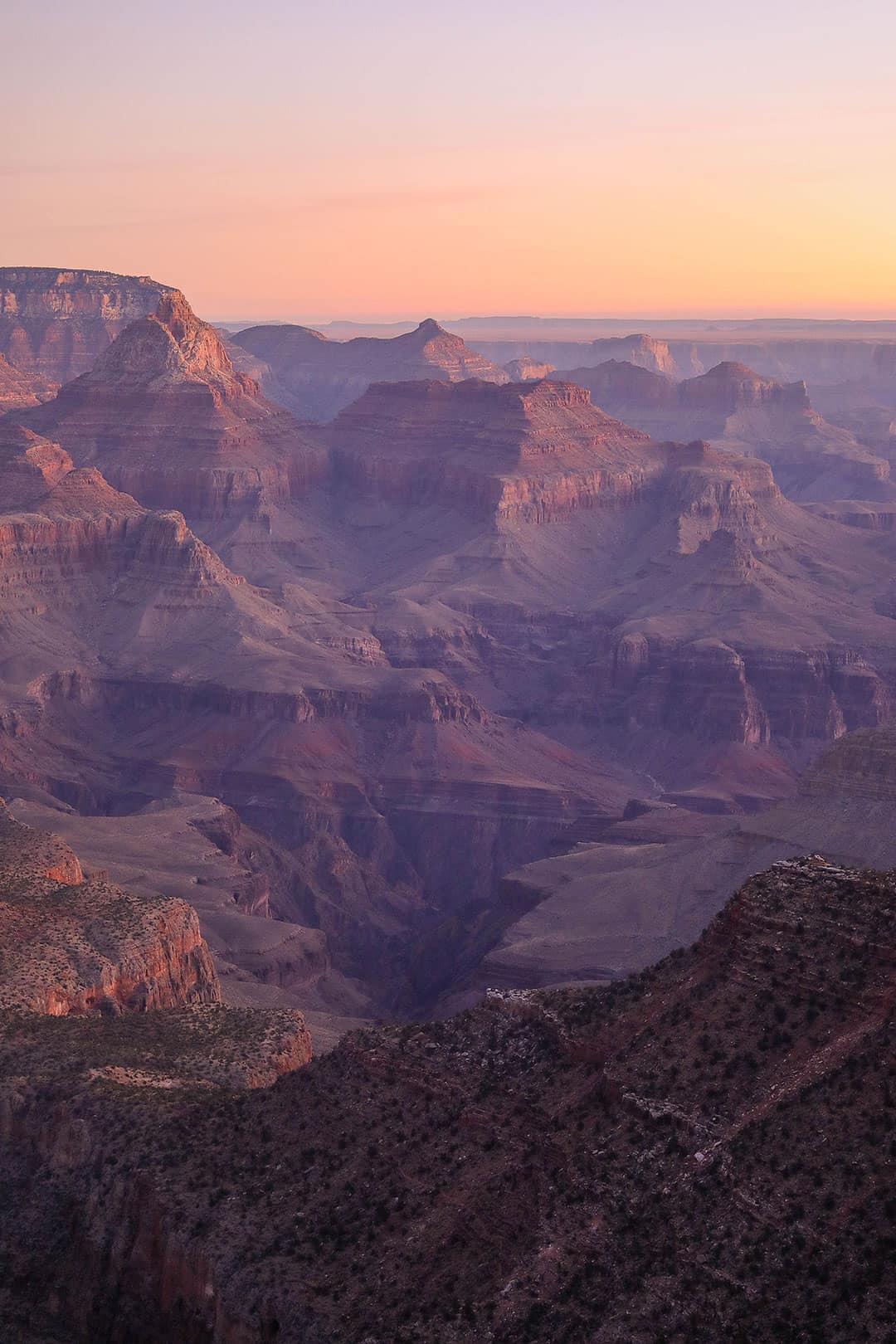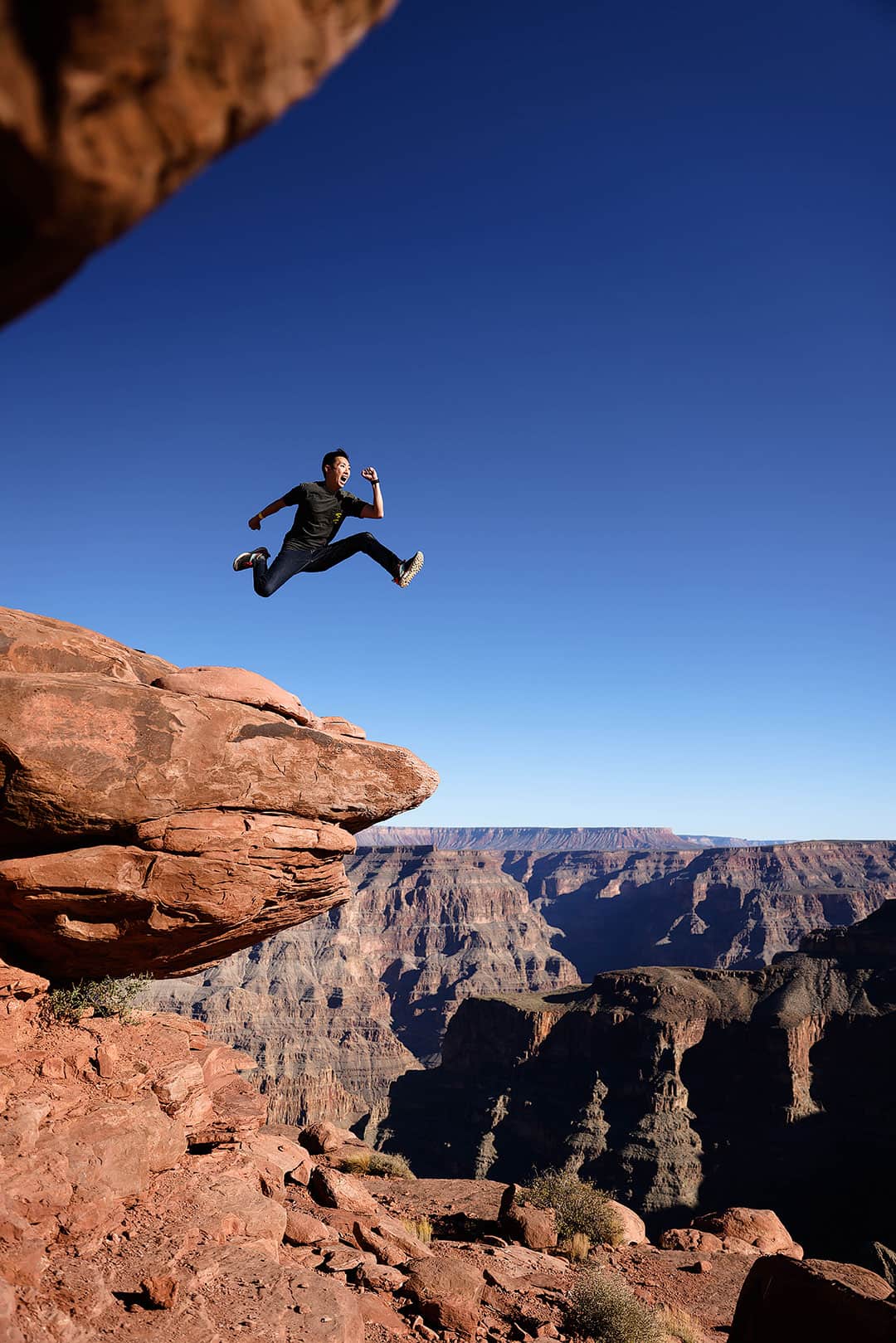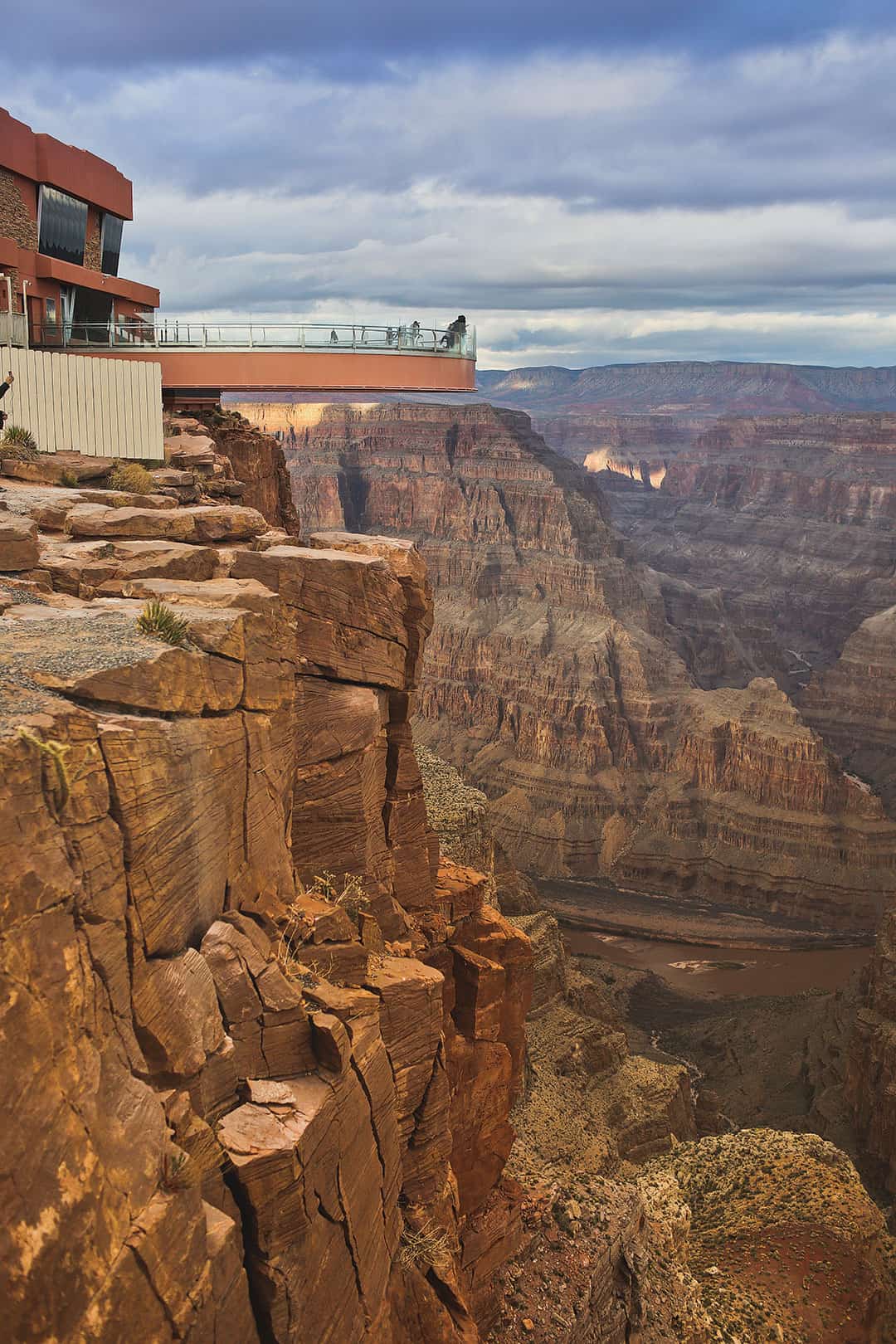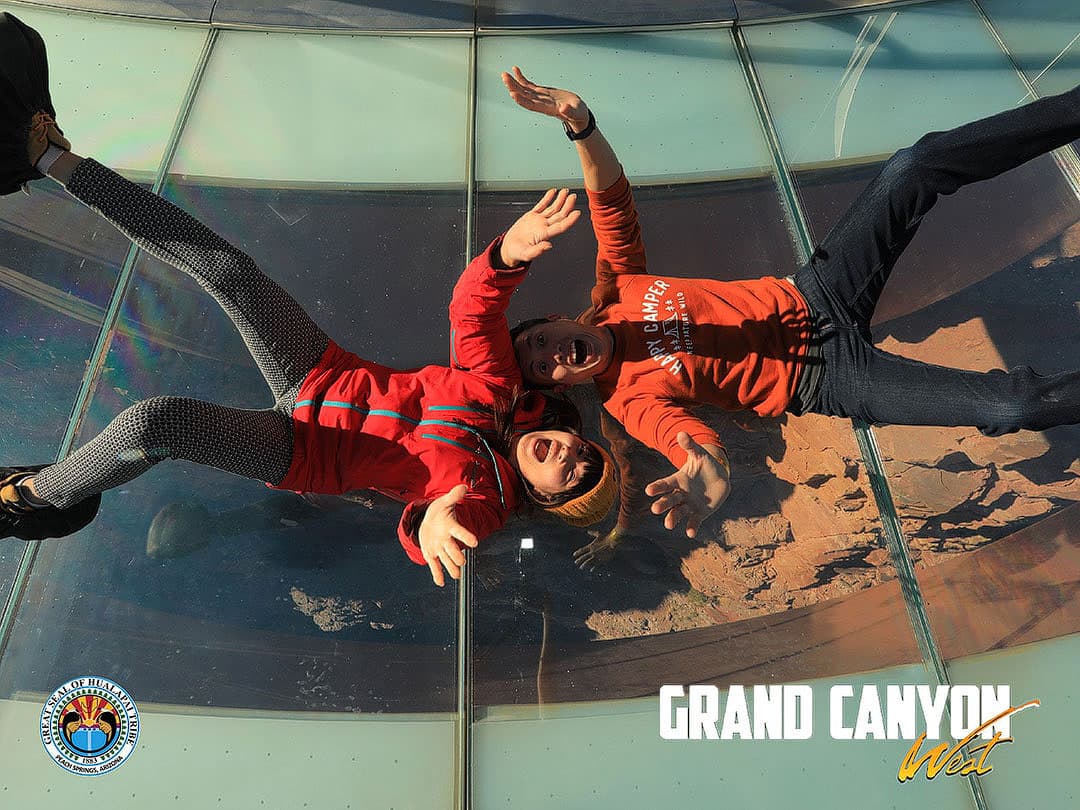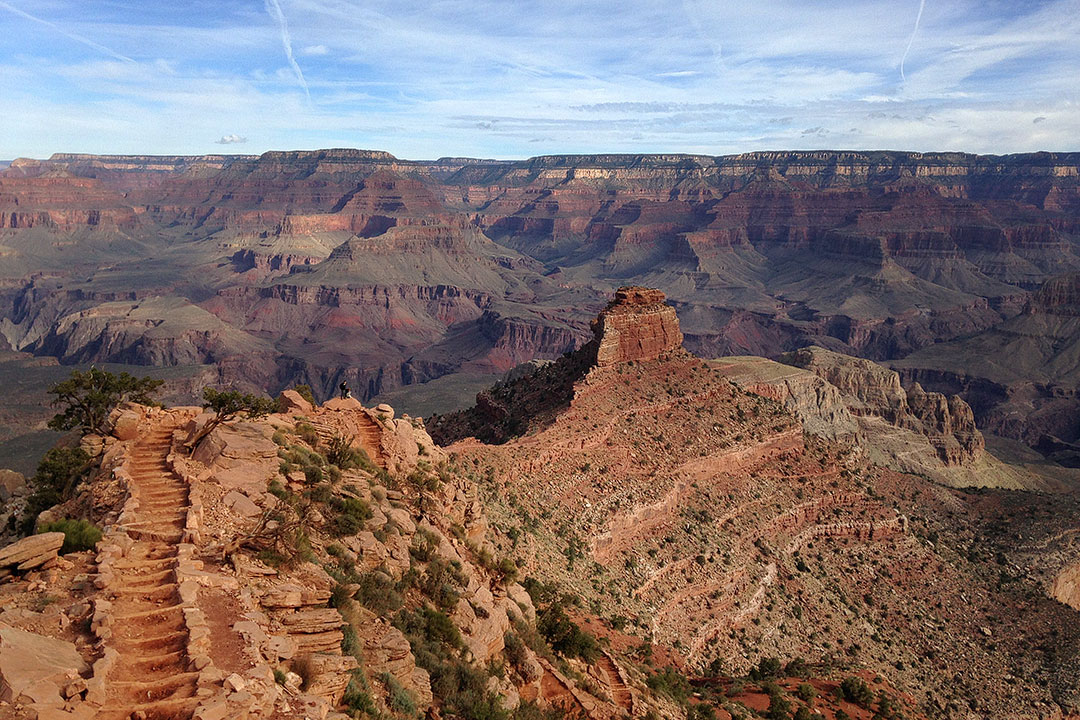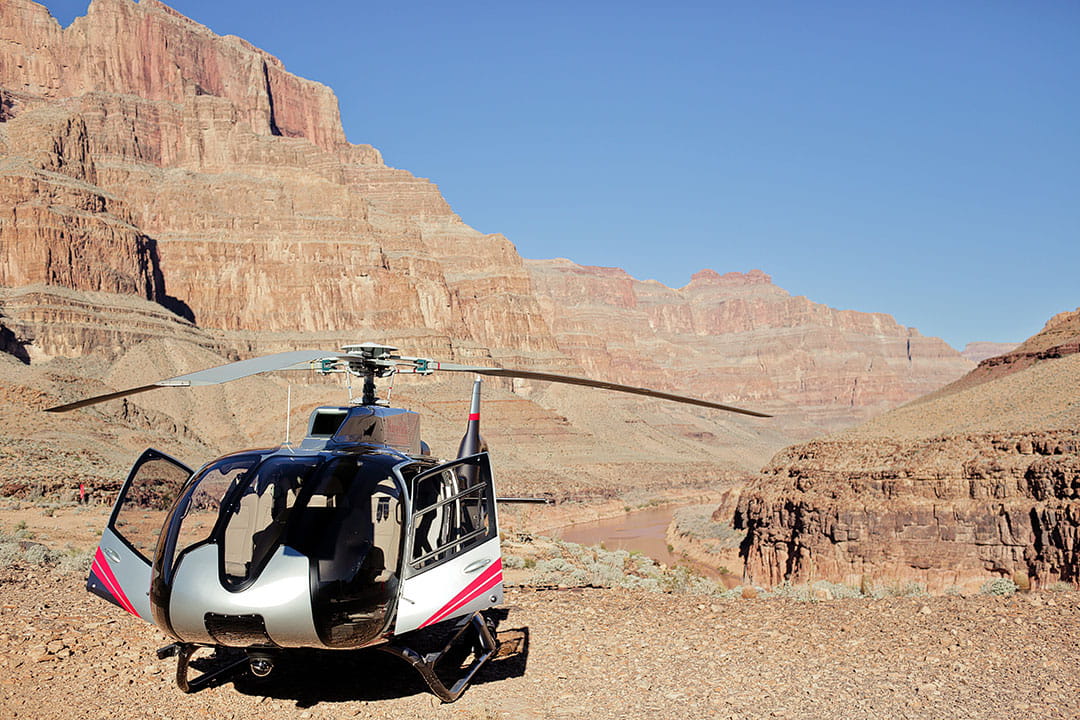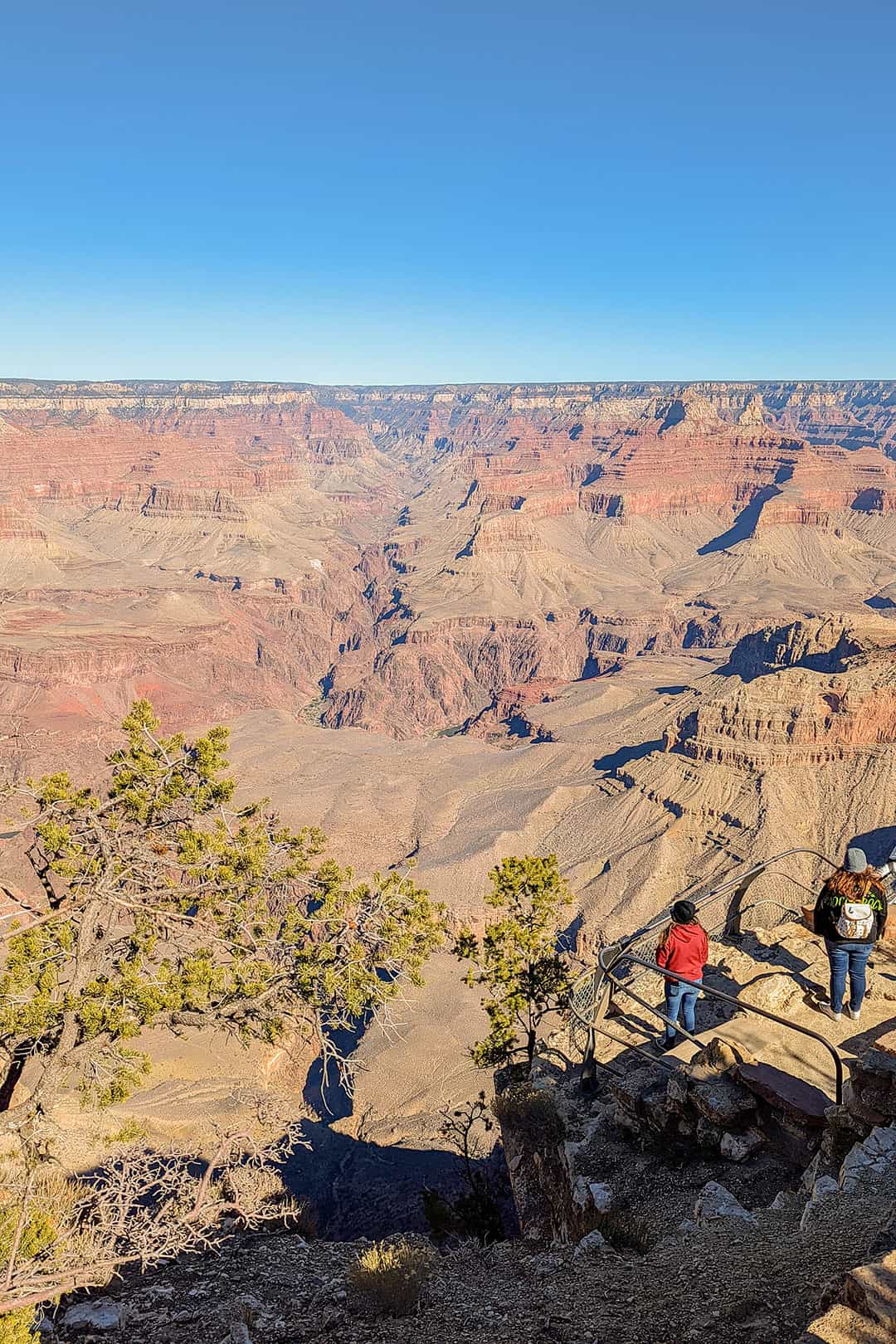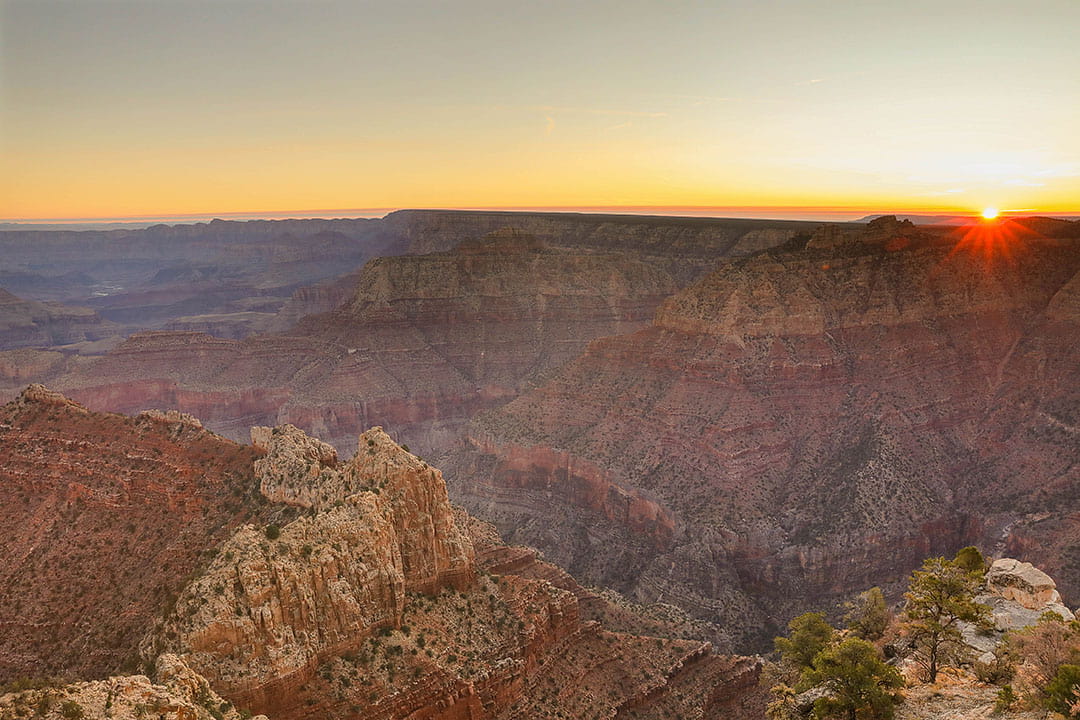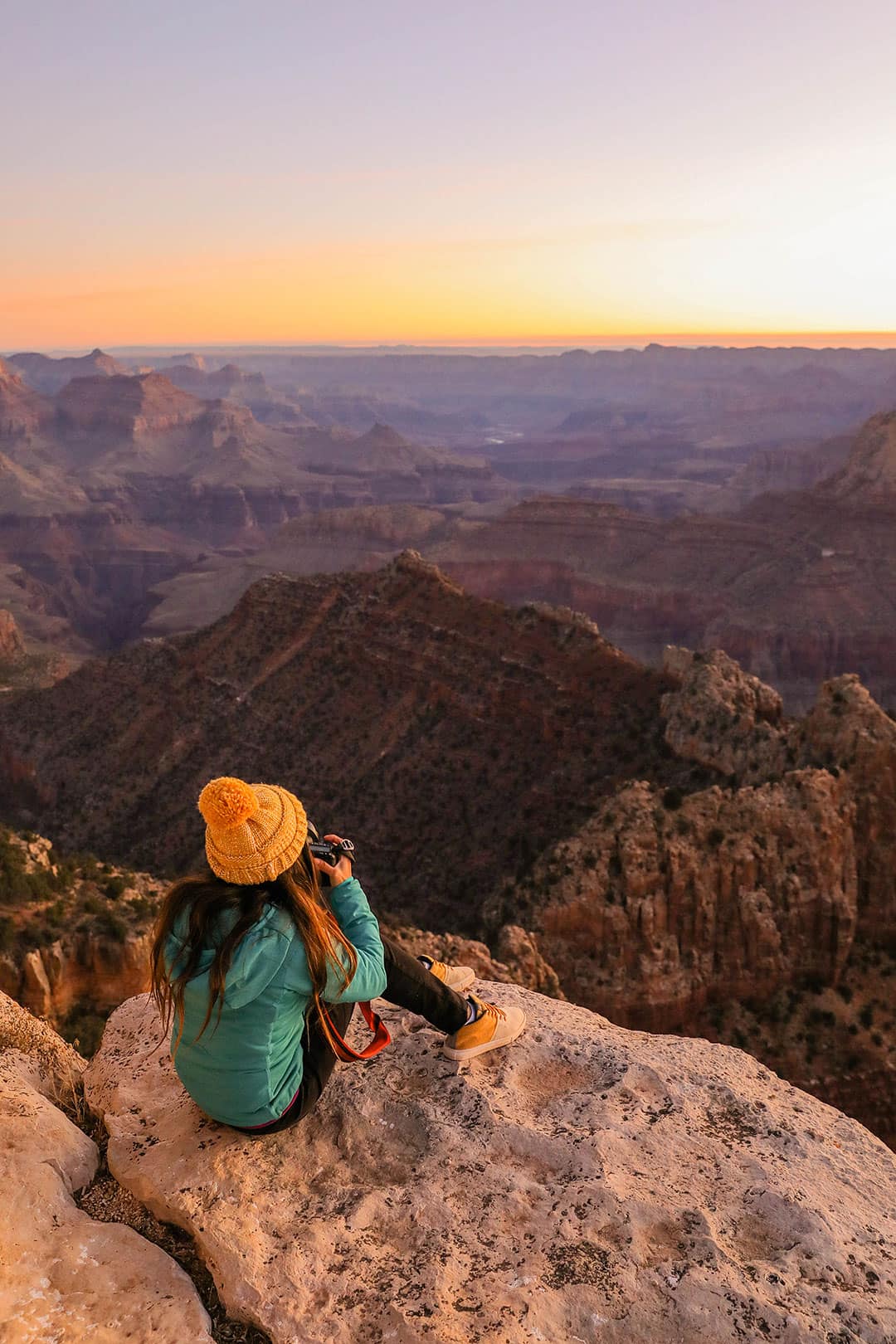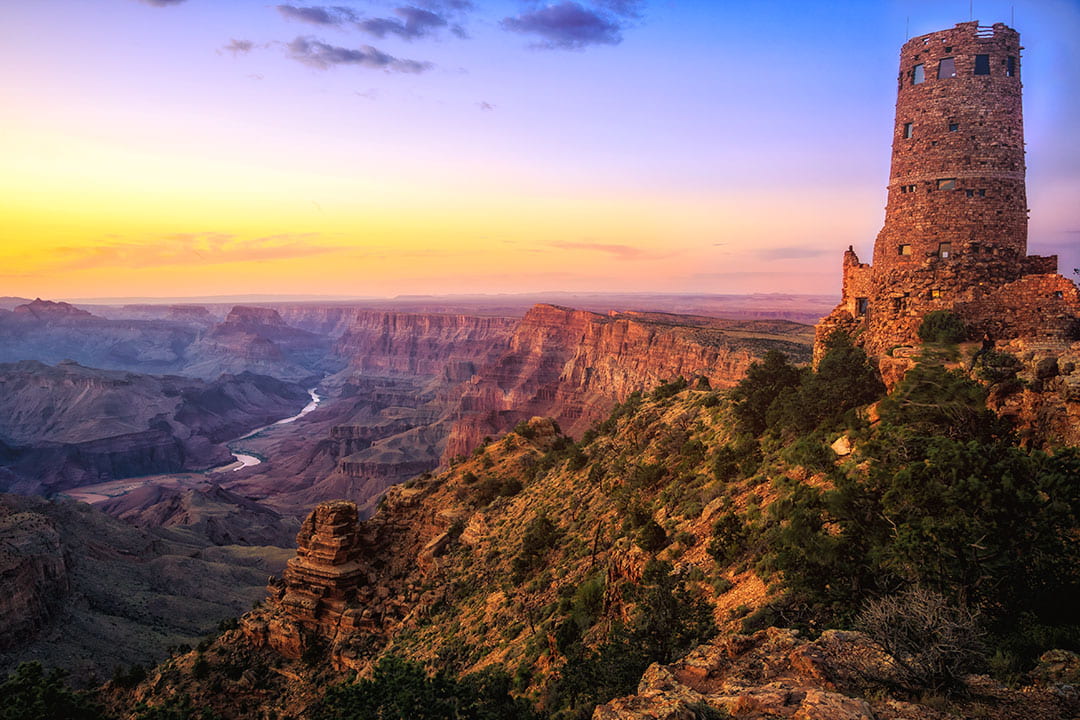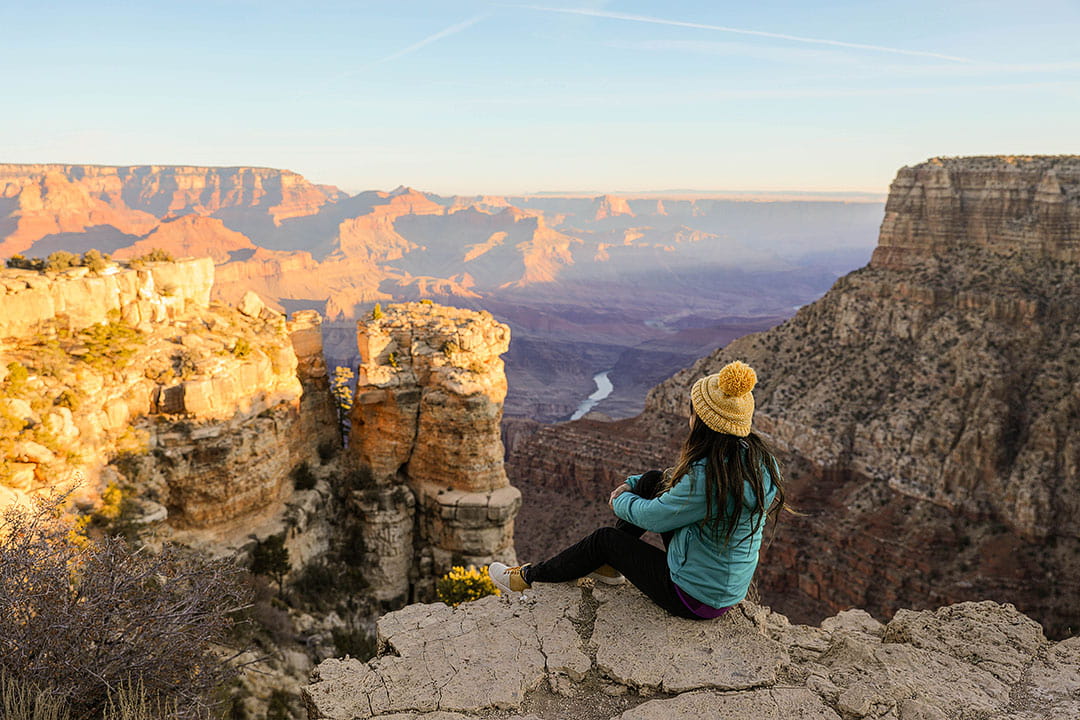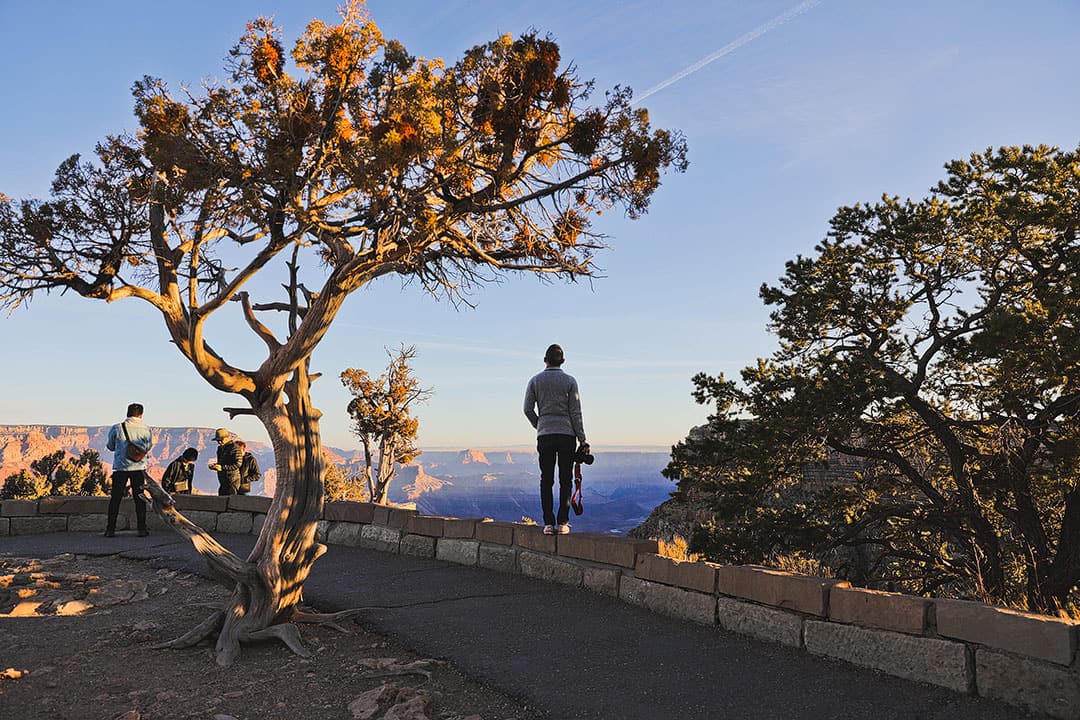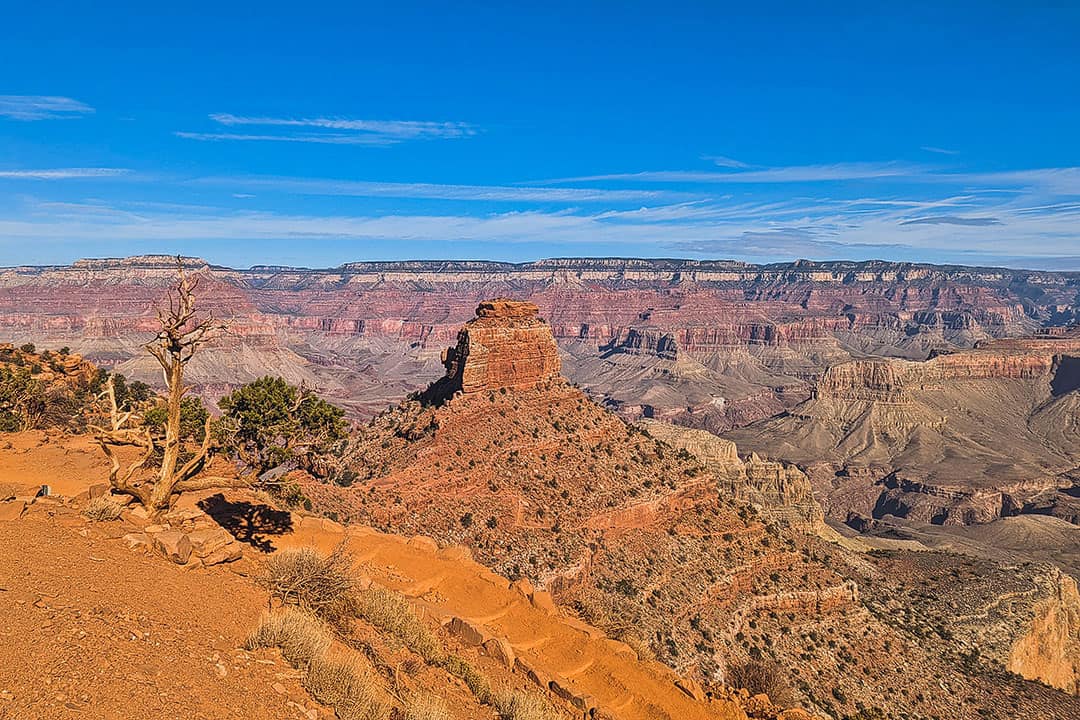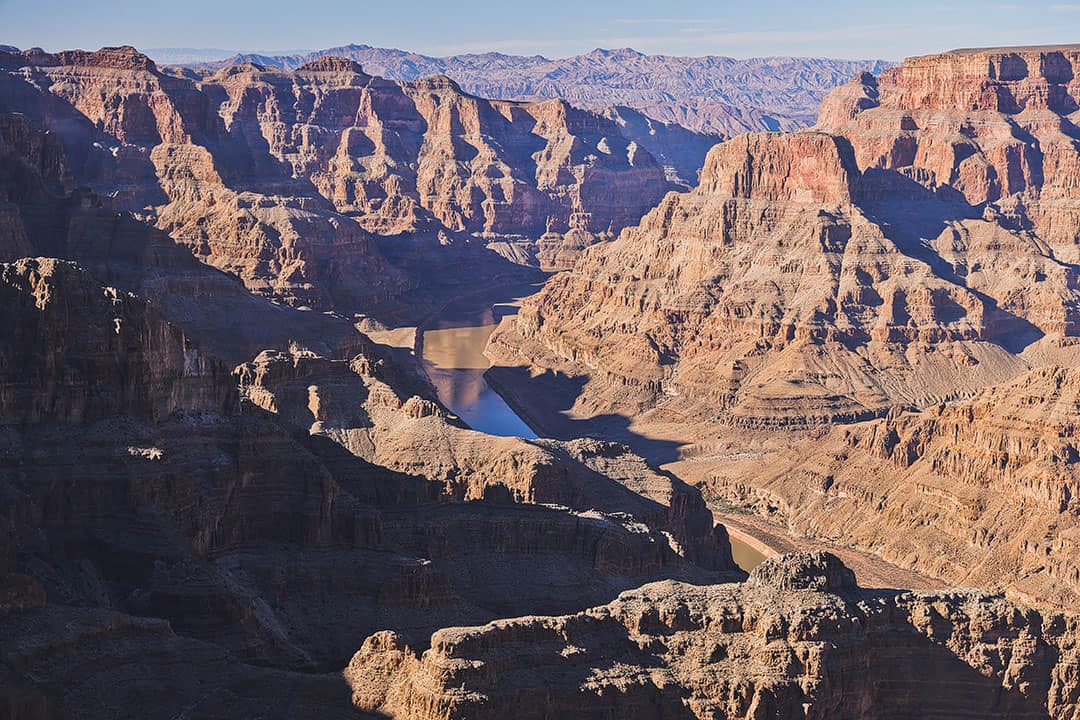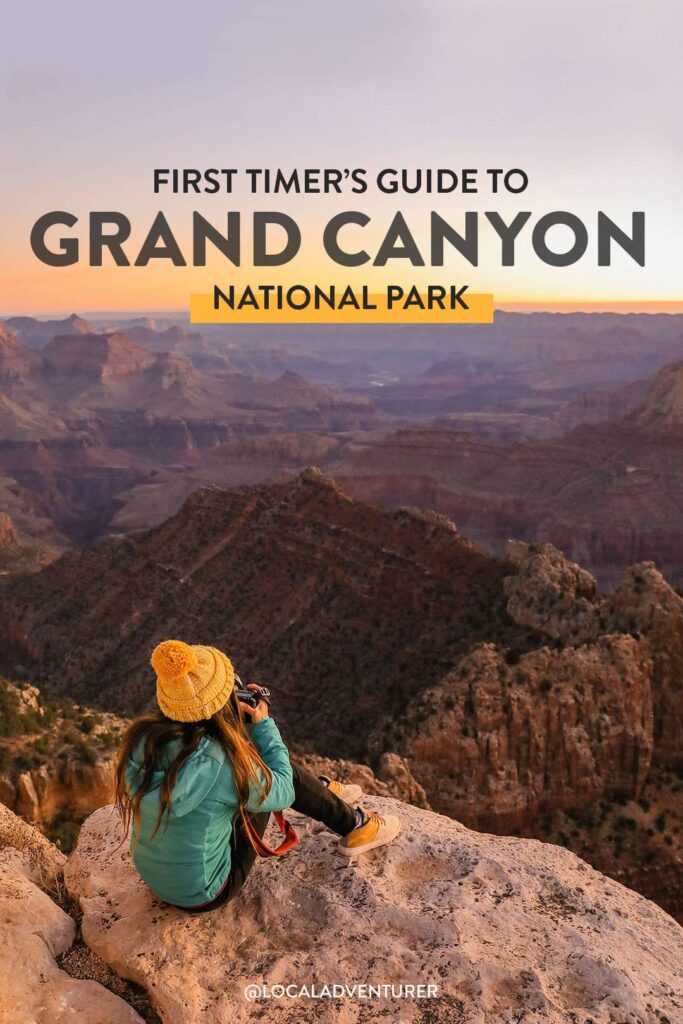Looking for the best things to do in Grand Canyon National Park? Here are the highlights.
The Grand Canyon is the largest canyon in the US, the second most visited national park in the US, and one of the seven wonders of the world.
It’s an easy weekend from Las Vegas, and can even be a day trip to some parts like the South Rim and Grand Canyon West (not part of the national park).
This post may contain affiliate links, where we receive a small commission on sales of the products that are linked at no additional cost to you. All opinions are always our own. Read our full disclosure for more info. Thank you for supporting the brands that make Local Adventurer possible.
Last Updated: February 2, 2022
About Grand Canyon National Park
The Grand Canyon National Park is located in Arizona and covers 277 miles of the Colorado River. It’s up to a mile deep, 18 miles wide, and is known for its layered red rock landscape.
Contrary to popular belief, did you know that the Grand Canyon isn’t the deepest or longest canyon in the world? Hint – the deepest canyon in the world is in Tibet, and the deepest canyon in the US is along the Oregon/Idaho border.
Which side of the Grand Canyon is best to visit? Which is better the North Rim or South Rim?
The South Rim is the easiest to access and offers the most services. It’s also more crowded. The North Rim is better if you enjoy a more rugged experience away from crowds. It is closed in the winter.
What You Need to Know Before You Go
- Pick up an Annual National Park Pass to save money if you plan on visiting multiple parks.
- What is the best month to visit the Grand Canyon? Visit between March and May or September and November for thinner crowds and better daytime temps. The peak season is from late spring to early fall.
- What time of day is best to visit the Grand Canyon? Sunrise and sunset are the best time to visit because there is more depth and color in the canyon.
- The North and South Rim are 5 hours apart by car, so it’s essential to plan the spots you want to hit up.
- The South Rim is the most developed part of the park. The North Rim is much more remote and is closed during the Winter. The season usually runs from May 15th to October 15th.
- Grand Canyon West, which is only 2 hours away from Las Vegas, is located on tribal land, which isn’t part of the National Park.
- Pack layers. Temperatures vary throughout the year and in different parts of the park.
Where is Grand Canyon National Park
The Grand Canyon is in the northwest corner of Arizona near the Utah and Nevada border. Most of the canyon is within the National Park, but attractions like the Grand Canyon Skywalk and the Havasupai waterfalls are on tribal lands.
How to Get to the Grand Canyon
The best way to get to the Grand Canyon is by driving or renting a car. You get the most flexibility when you explore the park on your own. 90% of visitors go to the South Rim, which has the most services, iconic viewpoints, and a shuttle bus to take you around.
Tours can take you to the most popular spots if you want a quick overview and aren’t much of a planner.
To get to the South Rim Visitor Center, map to this address:
36.0591321,-112.1115049
S Entrance Rd
Grand Canyon Village, AZ 86023 (map)
To get to the North Rim Visitor Center, map to this address:
36.1983753,-112.0546745
AZ-67, North Rim, AZ 86023 (map)
Fees + Costs at Grand Canyon
All entrance fees work for seven days and include the North and South Rim. Fees are as follows:
- Vehicle Permit (up to a 15 person van) – $35
- Motorcycle Permit – $30
- Individual Permit (by foot, bicycle, park shuttle, railway, rafting etc) – $20
- Grand Canyon National Park Annual Pass – $70
- America the Beautiful Annual National Park Pass – $80
There are also fee-free days. Here are the 2022 free days:
- Monday, January 17, 2022 – Martin Luther King, Jr. Day
- Saturday, April 16, 2022 – First day of National Park Week
- Thursday, August 4, 2022 – Anniversary of the Great American Outdoors Act
- Saturday, September 24, 2022 – National Public Lands Day
- Friday, November 11, 2022 – Veterans Day
17 Best Things to Do in Grand Canyon National Park
1. Grand Canyon Village, South Rim
36.0459052,-112.1871914, map
The Grand Canyon Village is on the South Rim and mainly focused on accommodating tourists. There are three main areas or districts in the village.
The Visitor Center / Mather Point area is where most visitors see the Grand Canyon for the first time. There are four large parking areas and a transit center for the free shuttle bus.
If you’re looking for services, head to the Market Plaza district, where you’ll find the general store, bank, and US Post Office.
The Historic District was where the village started roughly 120 years ago. You’ll find historic lodges and the railroad depot her
Local Tip: The free shuttle bus can easily take you around Grand Canyon Village.
See Related – The Ultimate Las Vegas to Grand Canyon Road Trip
2. Grand Canyon Skywalk, Grand Canyon West
808 Eagle Point Rd, Peach Springs, AZ 86434, map
The Grand Canyon Skywalk is in Grand Canyon West on Hualapai Tribal land, not the national park. The glass bridge gives you a unique opportunity to walk over the canyon.
Having been to both, we prefer the National Park as it gives better and more natural views, but if you don’t have much time, Grand Canyon West is the closest to Las Vegas and the easiest way to experience the canyon.
Keep in mind that you cannot bring any camera gear or even your phone with you onto the bridge. There is a separate line to get photos taken by official photographers. You won’t get the best photos, and they all come with a watermark, but it’s a massive improvement from a few years ago. On our second visit, we decided to purchase them. At the very least, they took their time and did various serious and silly poses.
Local Tip: Lines can get extremely long (up to a couple of hours) during holidays and summer weekends.
4. Hiking
Hiking is a great way to enjoy the views without the crowds. You have plenty of options for all activity levels, and day hikes do not require permits. Remember that it’s hot in the summer, and you need to stay hydrated. Be prepared with the appropriate gear and understand the difficulty of the hikes before starting them. Here are some popular hikes to check out:
- South Kaibab Trail, South Rim (steep) starts at Yaki Point, and you can hike up to 6 miles round trip. Great views for a shorter hike.
- Bright Angel Trail, South Rim (steep) starts at Bright Angel Lodge, and you can hike up to 12 miles round trip.
- Rim Trail, South Rim: An easy hike that follows along the rim with some paved sections.
- Trail of Time Hike, South Rim: Easy 2.83 mile long paved walk that takes you through the geologic timeline of the canyon. Each meter represents one million years of the canyon’s geologic history.
- North Kaibab Trail, North Rim is the only maintained trail into the canyon from the North Tim, varying in distance from 1.5 miles round trip to Coconino Overlook to a full day 9.4-mile hike to Roaring Springs.
Local Tip: Hikes that take you below the rim require a lot of elevation change. Keep that in mind when you calculate the time you need to allot.
See Related – 25 Best Hikes in the World to Put on Your Bucket List
5. Helicopter Tour
Hop on a helicopter tour to get amazing aerial views of the canyon. They even have helicopter tours that land inside of the canyon. All scenic air tours do not go into the National Park.
Local Tip: Book a tour closer to sunrise or sunset for the best views and light. As you can see below, we went mid-day and did not get flattering light.
6. Mather Point, South Rim
With its proximity to the Grand Canyon Visitor Center, Mather Point is often visitors’ first view of the Grand Canyon. It’s also a popular stop for tours.
On a clear day, you can see 30+ miles to the east and 60+miles to the west from this viewpoint, making it a good spot for sunrise and sunset throughout the year.
Local Tip: There is no parking at Mather Point but plenty in the area, which is just a short walk away. It’s also a stop on the Kaibab/Rim Route (orange route) on the shuttle bus.
7. Yavapai Geology Museum + Yavapai Point, South Rim
36.0661012,-112.1197315, map
The Yavapai Geology Museum is a great spot to learn about all the rocks you see in the canyon. They have panoramic windows with displays, a bookstore, and a museum shop.
8. Grandview Point, South Rim
3635.998471,-111.9899443, map
As the name implies, you get quite the grand view here. This spot on the South Rim gives you panoramic views with colorful canyons and ridges. You can also see the Colorado River below. It’s an excellent spot for sunrise, especially if you want to get a sunstar in your photo.
9. Toroweap Overlook, North Rim
36.2144494,-113.0587276, map
Toroweap Overlook (or Tuweep Overlook or Toroweap Point) offers dramatic views 3,000 feet above the Colorado River. It’s a beautiful view away from the crowds with a sheer drop-off and volcanic cinder cones.
If you want to wake up to a sunrise, consider camping at one of the nine small campsites here.
Local Tip: You need a high clearance vehicle to get here. Be prepared with food, water, and supplies for your car since there aren’t any services in the area.
10. Bright Angel Point, North Rim
36.1935375,-112.0508239, map
Bright Angel Point is one of the best views on the North Rim (not to be confused with the Bright Angel Trail hike. It’s a short 0.25 paved trail to the viewpoint where you’ll be over 8,1000 feet above sea level. The trail climbs 200 feet so take your time.
11. Point Imperial, North Rim
336.2789688,-111.9808206, map
Point Imperial is the highest overlook on the North Rim at 8,803 feet. It’s also the northernmost overlook, which gives you a unique perspective of the canyon where the cliffs are relatively close (less than a mile apart).
12. Colorado River Rafting
Some of our friends have done this river rafting trip, and it’s something we hope to do soon. You get to experience the canyon in such a unique way compared to all the other typical visitors.
- Commercial River Trips: Let professionals guide you down the river.
- Noncommercial River Trips: Get permits to raft on your own. See details on river support and equipment rental here.
- 2 to 5 Day Trips – Permits are available one year in advance to launch from Diamond Creek and take-out at Lake Mead.
- 12 to 25 Day Trips – For longer voyages, try your luck at their weighted lottery (read their FAQs here).
13. Desert View Watchtower, South Rim
336.0440579,-111.8283121, map
The Desert View Watchtower (aka Indian Watchtower at Desert View) is a 70-foot stone building on the South Rim. It was completed in 1932 and initially designed as a visitor concession structure. You can still climb into the tower to get higher vantage points where you can see over 100 miles on clear days.
14. Moran Point, South Rim
3636.0051427,-111.926463, map
Moran Point was named after Thomas Moran, who helped establish the National Parks and was known for his landscape paintings. He still has pieces part of the Smithsonian.
It’s a great spot to check out the geology of the Grand Canyon and see the shadows and light change throughout the day.
15. Kaibab Bridge / Black Bridge
36.36.1009764,-112.0914428, map
The Black Suspension Bridge spans 440 feet across the Colorado River and is narrow, requiring you to walk single file. Mule rides going to Phantom Ranch use it, and from 1928 to the 1960s, it was the only crossing of the river for hundreds of miles until they built the Silver Bridge.
16. Ride a Mule or Horse
You can ride a mule into the canyon from the South Rim and North Rim.
South Rim mule rides are offered year-round and can be booked up to 15 months in advance. You’ll find multiple options for a short ride (starting at $155.77 per person) to some vistas to an overnight ride to Phantom Ranch (starting at $705.13).
North Rim mule rides run between May 15th and October 15th. These are all shorter rides, and none of them go to the Colorado River. Rides start at $50 per person.
17. Scenic Drive
Desert View Drive is a great way to see some of the best spots along the Grand Canyon’s South Rim. It starts near the village and Desert View Drive is an incredibly scenic drive with six developed viewpoints, four picnic areas, five unmarked pullouts along the Grand Canyon’s South Rim. It starts near the village and runs 23 miles to the Desert View Services Area.
More Things to Do in Grand Canyon
FAQs
What types of activities can you do in the Grand Canyon National Park?
Enjoy views, take a scenic drive, go hiking, ride a mule, go on a train ride, go on a raft trip, and more.
What should you not miss at the Grand Canyon?
The South Rim has the most iconic spots, including Mather Point, Grandview Point, Grand Canyon Village, and more.
How long should you spend at the Grand Canyon?
You should spend 1-3 days at Grand Canyon to see the major sites.
What do tourists like at the Grand Canyon?
Visitors love seeing the scenery and grandeur of the Grand Canyon. Others visit to hike rim-to-rim, camp, or go on outdoor adventures.
Is the Grand Canyon worth it?
It’s bucket list-worthy, and there is nothing quite like it. Since it isn’t too far from Las Vegas, we don’t have much of an excuse not to visit.
Can I sleep in my car at Grand Canyon?
Sleeping in your car is considered camping, and camping is only allowed in developed campgrounds. You cannot sleep in your vehicle in random spots.
Which Rim of Grand Canyon is closest to Zion?
Zion National Park is two hours north of the Grand Canyon North Rim.
How long does it take to drive from South Rim to North Rim?
It takes roughly five hours (215 miles) to drive from the North Rim Village to the South Rim Village.
Do I need a permit to hike the Grand Canyon?
A permit is not required for any day hikes, but if you plan on staying overnight, you need a backcountry permit.
How long is the rim to rim trail? Do you need a permit to hike the Grand Canyon rim to rim? How do I prepare for rim to rim Grand Canyon? How do you train rim to rim? Can you do rim to rim in one day?
The Rim-to-Rim hike is roughly 24 miles with 5,150 ft of elevation changes. If you day hike it, you do not need a permit, but if you plan on staying overnight, you do. The hike is not easy to it’s smart to train for constant elevation changes and endurance. You can do the entire hike in 12-15 hours but it is very strenuous.
How long does it take to climb the Grand Canyon?
On average, it takes 4-5 hours for most people to hike down to the river. It usually takes 7-8 hours to hike back out.
What is the box in the Grand Canyon?
The box is a narrow canyon that runs roughly 4 miles along the North Kaibab Trail. It’s one of the hottest sections of the hike.
Will your phone work in the Grand Canyon?
Cell service is extremely limited in Grand Canyon. You should not expect to get service although there will be some spots you might find it.
Can you stay overnight at the bottom of the Grand Canyon?
You can stay overnight at the bottom of the canyon. The Bright Angel Campground is there as well as Phantom Ranch, where there are hiker dorms and cabins.
Is there a waterfall in the Grand Canyon?
The five Havasupai Falls in the Grand Canyon aren’t within the National Park but on Havasupai Indian reservation land.
What city do you stay in to visit the Grand Canyon?
Grand Canyon Village at the South Rim has great accommodation options if you plan on spending multiple days at the park. You can also take day trips from Las Vegas or Phoneix.
Has anyone ever died on a Grand Canyon mule ride?
A mule train employee was crushed by a mule in a fall in 1984. He was the only person who has ever died while riding a mule up. or down the canyon.
Do people fall off the Bright Angel Trail?
The Bright Angel Trail is the most dangerous hike in Arizona, with the most rescues and 911 calls than any other trail. This is primarily because of the length and elevation. Emergencies tend to happen because people are not prepared for the 18-mile hike.
Are there wild horses at Grand Canyon?
There are no wild horses here but you may see feral horses that belong to someone but are free-roaming.
How much does it cost to ride the Grand Canyon Railway?
Prices vary depending on the type of seats you want. Pullman Class seats start at $67 pp ($32 for children), Coach Class starts at $82 pp ($51 for children), and First CLass starts at $159 pp ($121 for children). In addition to that, there are Observation Dome seats starting at $189 pp ($153 for children), Luxury Dome seats starting at $226 pp, and Luxury Parlor seats starting at $226 pp.
Camping at Grand Canyon
There are 4 developed campgrounds within Grand Canyon National Park. You can make reservations for all of them.
The Mather Campground is on the South Rim near the Grand Canyon Village and is open all year. There are 327 sites, flush toilets, and drinking water. Most RV spaces are pull-through.
The Desert View Campground is on the South Rim and is open mid-April to mid-October. There are 49 sites and you can make reservations up to 6 months in advance.
The North Rim Campground is open May 15 to October 31 and there are 87 sites.
Trailer Village is located on the South Rim and has RV spots with full hook-ups. There are 123 sites and you can make reservations up to 13 months in advance.
Which of these would you put on your Grand Canyon itinerary? Can you think of other things to do in the Grand Canyon?
DID YOU ENJOY THIS POST? PIN IT FOR LATER
SEE MORE NATIONAL PARK GUIDES
⟡⟡⟡⟡⟡
“Discovery consists not of seeking new lands but in seeing with new eyes” – M. Proust
There has never been a better time to plan your next trip and make your Dream vacation a reality . Whether you've been dreaming of relaxing on a sun-kissed beach, exploring ancient cities, or embarking on an epic adventure, now is the perfect moment to make it happen.


